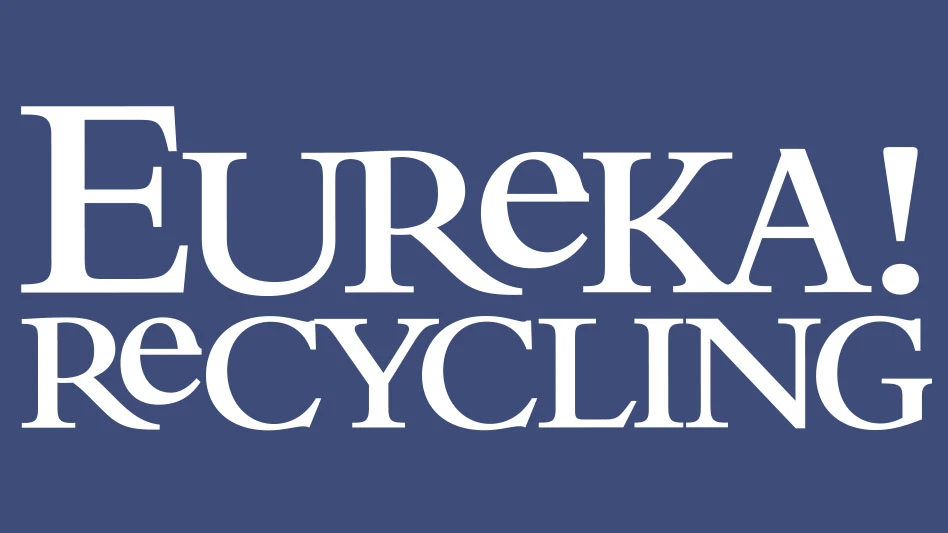As a statewide recycling coalition director in the fifth largest state (by area), I can't count how many times I've been called by an energized citizen, teacher or village clerk who asked about how to start a recycling program in her community. I reply with the usual questions that I know will most likely lead to disappointing answers: Where is the closest recycling processor? How would you collect the recyclables? How would you transport the material? Do you have any money to allocate to this program?
Most of our communities in New Mexico are by definition rural, which technically means they are home to 10,000 or fewer citizens. And most are not near the epicenter of our state, Albuquerque, where half of the population lives. I've been the bearer of bad news too many times to these eager folks when I lead them to realize that recycling is just not practical for their communities because the nearest recycling center that could process the material is either too far or cannot accept additional recyclables for political or capacity reasons.
In light of this challenge, when the state environment department brought together solid waste stakeholders in 2006 to update the solid waste management plan, the overarching goal was not attaining a recycling percentage but something entirely different—to provide recycling access to all New Mexicans. Think of it as a recycling equal rights act that means where one can throw trash, one should be able to recycle as well.
With this goal of access in mind, the New Mexico Recycling Coalition (NMRC) set out to map solid waste flow in the state and to understand where recycling was available and where it was lacking. We documented the locations of all the landfills, transfer stations and recycling and composting centers. We also started reaching out to rural communities to assess their needs and to provide technical assistance. This first phase was funded by a USDA (United States Department of Agriculture) Rural Utilities Solid Waste Management grant in 2008.
Our big question at the end of that road was where we had recycling processing and where we didn’t. In most cases the trash flowed to centralized communities. We figured if we could help these communities expand their recycling processing, we would ultimately benefit the outlying communities. And then, voila, they would finally have somewhere within a reasonable distance (less than 60 miles) to bring their recyclables rather than stashing the material in the backs of pickups and hauling it for hundreds of miles.
DEFINING THE HUBS
Thus came about the “Rural Recycling Hub and Spoke Recycling” project. We certainly are not re-inventing the wheel but we are taking a strategic look at how to most efficiently transport and process the material so that small communities can recycle without having to make huge upfront and recurring investments into equipment and labor. Once a recycling hub was developed, our dream was that multi-material recycling trailers or roll-off containers could then be placed in the surrounding region’s rural drop-off stations.
So the next question became where these hubs should be located and how they could be developed. The hub-and-spoke “dream” map, as we call it, has been our guiding light of sorts. We considered existing recycling processing capacity, political goodwill, landfill locations, existing solid waste authorities and logical regional partnerships when we developed this dream map. And the map is still evolving as we continue to get to know our communities.
After two years of working under the USDA grant, we had created the map, visited most of the existing and prospective hub sites to assess their needs and potential and were able to get to know the challenges they faced.
Another road block standing in the way of our dream recycling hubs was market access. Many of these identified hub communities quickly noted that they wouldn’t mind operating a regional recycling program but asked how they would market the material and generate the revenue needed to cover the cost of operations. Even though the regionalized hub would be accepting material from many small nearby communities, the small quantities of such items as plastics, aluminum or tin could mean it would take a whole year to generate a handful of bales. We also found that some of the smaller recycling communities were receiving only 25 percent of market prices selling to brokers. This was because of the small amounts of material they were generating and their relative distance to or isolation from other communities. So we decided to develop a business plan to launch a cooperative marketing entity, based on the model created by Texas Cooperative Teamwork and Recycling Assistance, Austin. This program uses a premise similar to that of farm cooperatives, in which small farms pool resources, working together to make full truckloads. Thus, they are able to gain fair market prices. Another challenge we faced was how to develop the recycling center hubs. We identified 10 potential hub locations as well as five more sites that have recycling infrastructure but that would require expansion to truly serve as regional hubs. The state of New Mexico offers a small annual grant fund of about $175,000 for recycling projects. But, with that small pot of money, it would take years of slowly investing in buildings, balers, collection trailers and roll-offs, conveyors and other equipment to bring access to all New Mexicans.
And then fate stepped in. The American Recovery and Reinvestment Act (ARRA) was approved in 2009, with many of its appropriations targeted toward the joint mission of job retention and energy conservation, specifically a program called the Energy Efficiency and Conservation Block Grant (EECBG). And what does recycling do? Well, we all know that on average for every one job landfilling there are about five jobs in recycling. And we also know that recycling saves energy as documented by the U.S. Environmental Protection Agency WARM (Waste Reduction Model) calculator.
TAPPING INTO FUNDING
The first opportunity we found to write for federal stimulus grant monies was in the summer of 2009. As a nonprofit we were not eligible, so we assisted our partners at the New Mexico Environment Department: Solid Waste Bureau and applied for and received $500,000 for what we called the “balers and trailers” project of the Hub and Spoke Recycling Center program. Under this grant program, the state has awarded three of the targeted hubs on the dream map with a horizontal baler with in-floor conveyor and several collection trailers or roll-offs to place in the region. (You’ll see those three communities in teal on the Hub-and-Spoke map, available at www.RecyclingToday.com/hubandspokemap.aspx, and noted as “Hubs Under Development.”)
In the late fall of 2009, another EECBG grant opportunity came to our attention. Under this solicitation the DOE wanted to fund proposals for innovative, replicable energy-conservation-oriented projects that retained and created jobs, saved energy and focused on rural or underserved areas. The grant announcement could not have been more well-suited to our dream.
In June of 2010, we heard that we were one of 20 grant recipients under this ARRA grant program. We had just gained $2.8 million to invest statewide to build and expand recycling infrastructure and take recycling to the next level in our state!
Since starting work in September 2010, we have already funded three turnkey recycling centers, each of which includes a horizontal baler, in-floor conveyor, storage bunkers, baler infrastructure, loading dock and initial collection equipment. This February, another round of grants will be awarded to build up the spokes, funding more collection trailers and roll-offs to surrounding communities. The marketing cooperative is in the works and should be ready to sell material from our recycling hubs by April 2011. All of our targeted communities will receive technical assistance for the next couple of years, be it baler safety training, strategic program planning or education and outreach material design. The goal of the program is to ensure that once the centers are built that they are effective, sustainable and draw participation.
Stockdale explains the overall objectives of the rural recycling centers: “Long-term sustainability is a direct outcome of the intentional hub-and-spoke model. By focusing the infrastructure in areas with little or no existing investments in recycling, we secure long-term opportunities of growth and expansion. From a labor perspective we have designed our facilities and selected equipment based on their capacity to perform across a broad scale of volumes. Their design as source-separated programs also supports this scalability and allows the community to keep labor costs within the context of the flow of materials.”
The author is executive director of the New Mexico Recycling Coalition, Santa Fe, N.M. She can be contacted at english@recyclenewmexico.com.

Explore the February 2011 Issue
Check out more from this issue and find your next story to read.
Latest from Recycling Today
- Sofidel agrees to purchase Royal Paper assets
- US Plastics Pact report charts expansion path for recycled content in packaging
- USTR announces phased measures designed to address China’s shipbuilding dominance
- APR, RecyClass release partnership progress report
- Clearpoint Recycling, Enviroo sign PET supply contract
- Invista expanding ISCC Plus certification program
- Redwood partnership targets recycling of medium-format batteries
- Enfinite forms Hazardous & Specialty Waste Management Council





